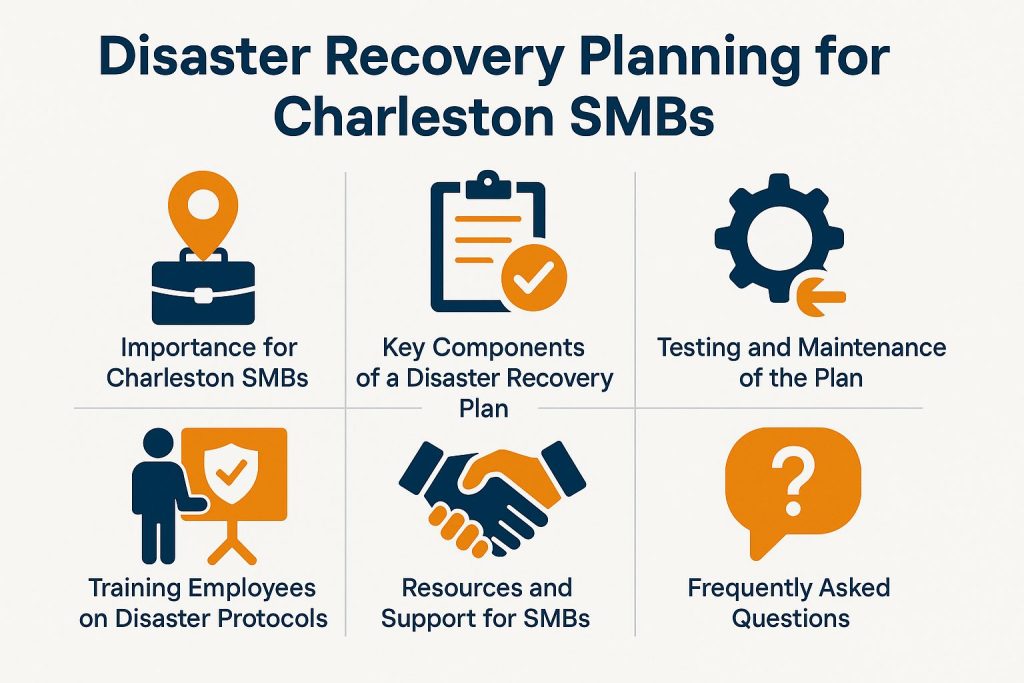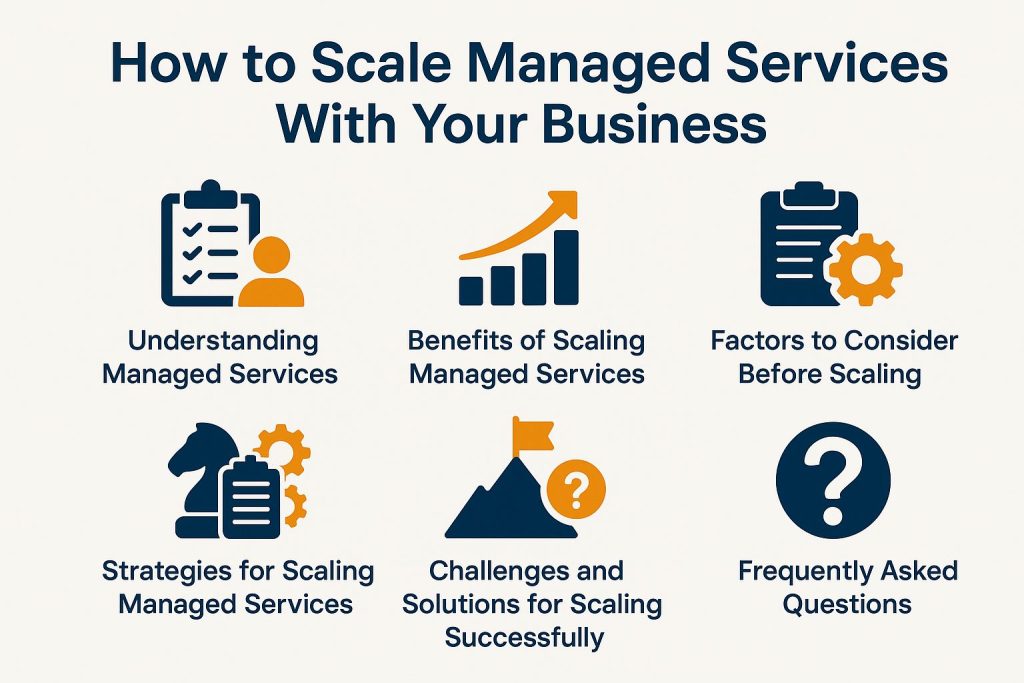How Strategic IT Planning Can Drive Business Growth

Today, strategic IT planning is vital. It drives business growth. Companies that use technology improve operations and gain a competitive edge. This article shows how IT drives business success. It highlights key parts of IT planning, like assessing infrastructure and setting investment priorities. Furthermore, it discusses how to align IT initiatives with broader business objectives through strategic alignment and the performance metrics necessary to measure their impact. The insights offer strategies for technology investment and resource management to help organizations grow.
The Importance of Strategic IT Planning for Business Growth
Strategic IT planning is essential for business growth. In today’s digital world, using technology well gives a competitive advantage.
Aligning IT strategy with business goals improves efficiency, resource use, innovation, and scalability. A good IT roadmap helps with digital transformation. It ensures smart investments in IT and cybersecurity. For an extensive analysis of this trend, our comprehensive study on avoiding common IT mistakes in a growing business offers valuable insights.
Additionally, good project management, stakeholder involvement, and change management are vital for successful IT planning.
Understanding the Role of IT in Business Growth
The role of IT in business growth has become increasingly critical as organizations leverage IT strategy to drive digital transformation and respond to evolving technology trends. As a backbone for innovation, IT empowers companies to optimize business processes and streamline operations. Additionally, it enhances customer relationship management through data analytics and business intelligence.
By aligning IT initiatives with overall operational strategy, businesses can streamline resource management, foster transformational leadership, and improve decision-making capabilities.
For instance, the integration of cloud computing has enabled many enterprises to increase flexibility, reduce costs, and bolster cybersecurity while ensuring that critical data remains accessible and secure.
Advanced technologies such as machine learning and AI enable organizations to extract deeper customer insights, facilitating personalized marketing efforts that significantly enhance engagement.
As businesses conduct technology assessments, they uncover opportunities for reengineering processes, enhancing efficiency, and fostering a greater culture of innovation among their teams.
These proactive measures not only support immediate business objectives but also lay the foundation for sustainable growth in an increasingly competitive landscape through enhanced scalability and business sustainability. This approach aligns with the principles outlined in our analysis of avoiding IT mistakes for long-term success.
Key Components of Strategic IT Planning
The key components of Strategic IT Planning encompass a thorough assessment of the current IT infrastructure, the establishment of clear goals, and the prioritization of IT investments in alignment with business objectives.
These elements serve as the foundation for ensuring that technology initiatives are in sync with strategic goals, while also optimizing resource allocation and improving performance metrics (our guide on avoiding common IT mistakes in a growing business provides additional insights).
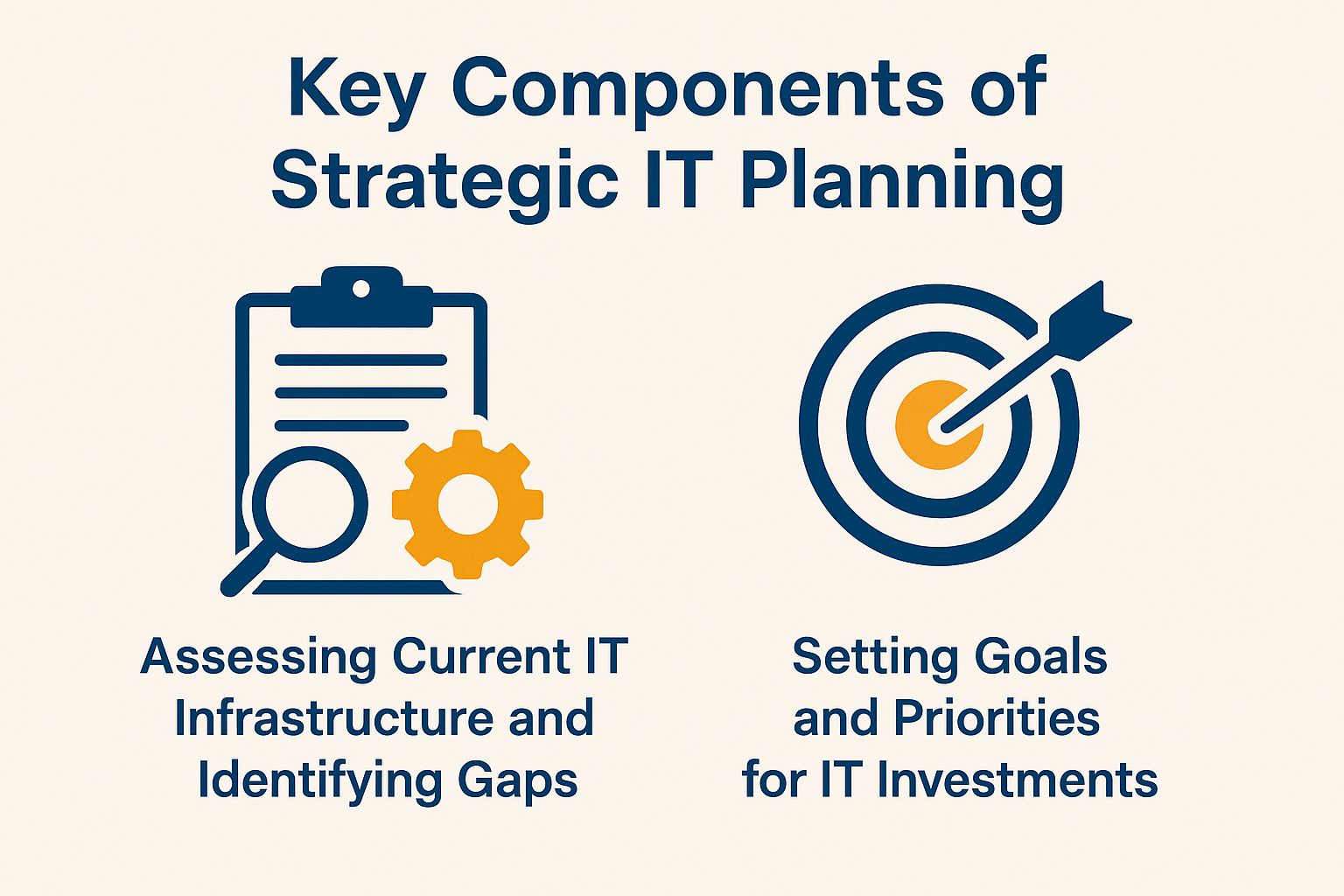
Assessing Current IT Infrastructure and Identifying Gaps
Assessing current IT infrastructure is essential for identifying gaps that may hinder business growth, enabling organizations to allocate resources effectively, enhance value chain analysis, and mitigate risks. A comprehensive evaluation of existing systems, software, and processes allows businesses to pinpoint areas needing improvement, thereby ensuring compliance with industry standards, enhancing IT benchmarking, and improving overall IT efficiency.
To achieve a thorough assessment, it is important to employ methodologies such as audits, performance metrics, stakeholder engagement, and strategic initiatives.
- Audits evaluate the current state of IT assets,
- Performance metrics track system effectiveness and highlight areas for optimization.
Engaging stakeholders ensures various perspectives are considered. This fosters collaboration and addresses gaps in technology integration.
Combining these approaches helps organizations develop a strong IT solutions strategy. This strategy addresses current deficiencies and aligns IT initiatives with business objectives, driving sustainable growth.
Setting Goals and Priorities for IT Investments
Clear goals for IT investments ensure alignment with the organization’s strategy. By defining specific objectives, businesses can prioritize technology adoption initiatives that enhance operational efficiency, support knowledge management, and deliver a favorable return on investment (ROI).
Measurable goals shape budgeting decisions. They provide a framework to evaluate the impact of technology trends on performance. When stakeholders understand performance metrics for IT initiatives, they engage more in budgeting. This fosters accountability and ownership.
Integrating measurable goals into IT governance aligns investments with business strategy. This helps organizations navigate the digital landscape and maximize technology value.
Integrating IT Planning with Overall Business Strategy
Integrating IT planning with the overall business strategy is essential for ensuring that technology initiatives effectively support and enhance business objectives while promoting agility. This integration promotes collaboration between IT and business leaders, facilitating change management initiatives that help the organization adapt to market dynamics and technology trends.
For example, managed IT services can play a key role in aligning technology initiatives with your overall business strategy. They provide reliable tech support that improves operational efficiency, enhances adaptability, and supports long-term growth. If you’re looking for expert support, our Managed IT Services in Charleston deliver professional solutions tailored to your business needs.
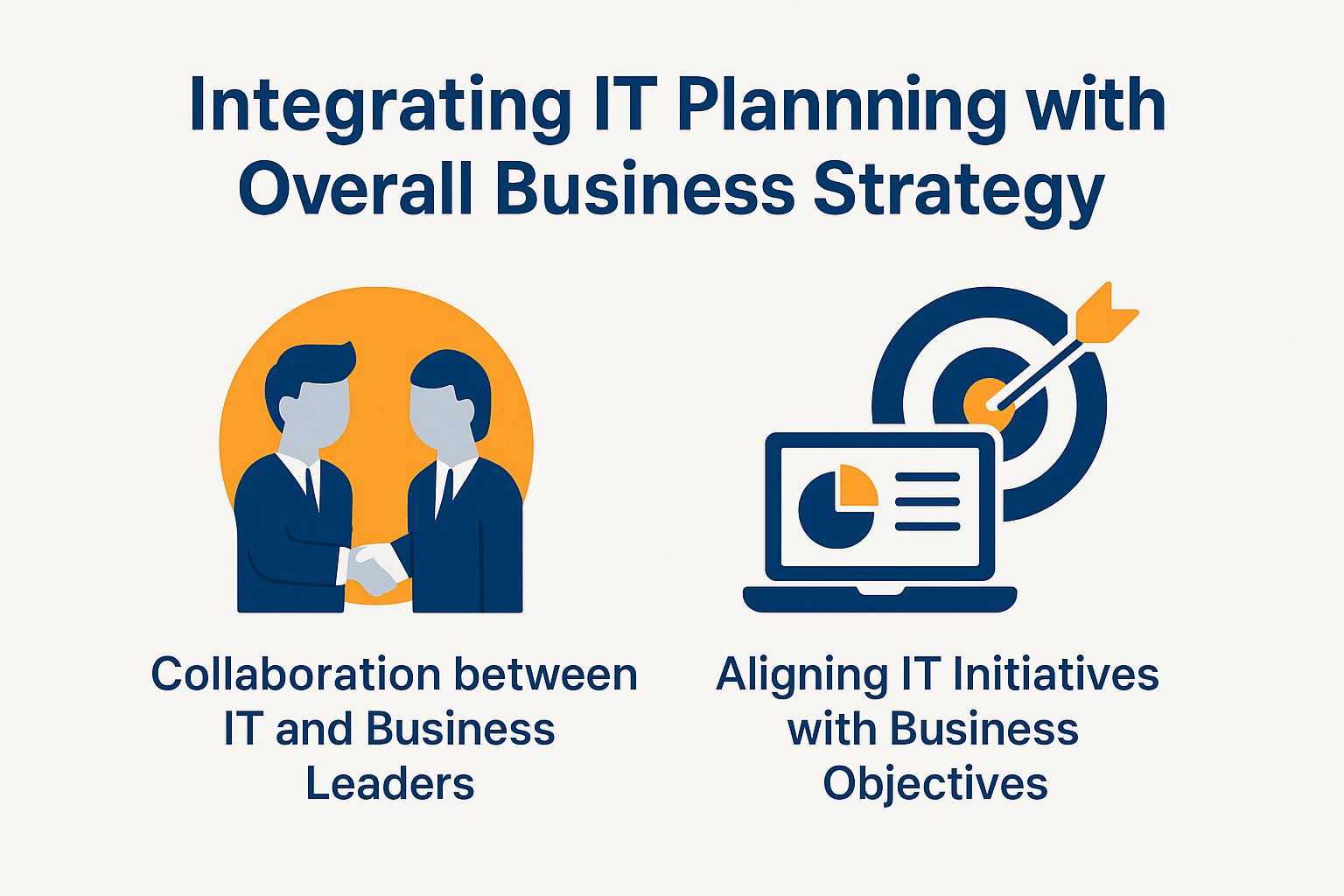
Collaboration between IT and Business Leaders
Collaboration between IT and business leaders is essential for developing a cohesive IT strategy that effectively supports critical business functions and goals through strategic IT planning. By fostering cross-functional teams, organizations can leverage diverse expertise and insights to drive innovation and ensure that IT investments align with the overall business strategy through effective collaboration tools.
To achieve this, teams must conduct thorough stakeholder analyses. They should identify key players who provide valuable perspectives during planning. Establishing clear performance metrics will facilitate the assessment of collaboration efforts, ensuring that all parties are aligned regarding success criteria, including workforce productivity and user adoption.
Additionally, focusing on process optimization can streamline workflows between IT and business units, reducing friction and enhancing productivity.
Nurturing collaborative practices enhances IT strategy and cultivates a culture of teamwork. This is essential for navigating the evolving technological landscape.
Aligning IT Initiatives with Business Objectives
Aligning IT initiatives with business objectives is essential. It helps achieve strategic goals. It ensures technology investments yield meaningful results through effective governance. This alignment requires a comprehensive understanding of business needs. It enables organizations to prioritize IT projects that enhance efficiency and support change.
To achieve such alignment, organizations may adopt various frameworks and methodologies that streamline IT governance, such as COBIT or ITIL. These frameworks offer structured approaches for performance measurement and risk management. They ensure IT efforts align with business goals and are executed efficiently.
Organizations can regularly evaluate IT investments. This helps them meet business objectives. It also mitigates risks, enhances supplier relationships, and adapts to market changes.
Measuring the Success of Strategic IT Planning
Measuring the success of strategic IT planning is essential for assessing the effectiveness of IT investments and their influence on business growth. Key metrics include return on investment (ROI), operational efficiency, stakeholder satisfaction, and business continuity. These metrics provide insights into the effectiveness of IT strategies.
For businesses, particularly those in Charleston, understanding the ROI of managed IT services can be instrumental in maximizing the benefits of strategic IT investments.
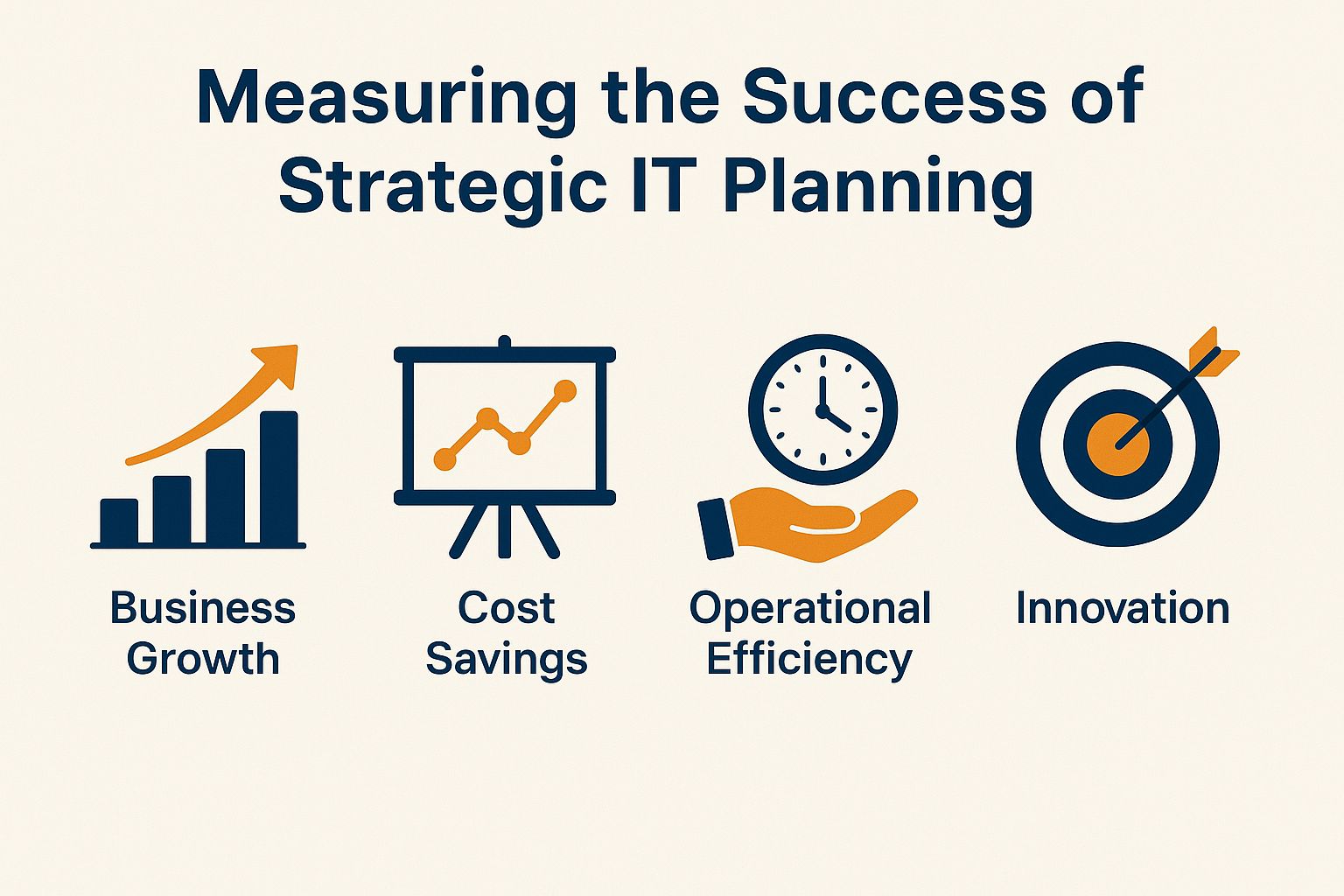
Key Metrics for Evaluating the Impact of IT on Business Growth
Key metrics for evaluating the impact of IT on business growth encompass data analytics, customer insights, overall performance metrics, and performance analysis that assess operational success. These metrics help organizations evaluate their IT strategies. They show how IT drives business transformation and competitive advantage.
By implementing metrics such as Return on Investment (ROI), companies can quantify the financial benefits derived from their IT expenditures, providing a clear overview of resource allocation efficacy. Evaluating business process reengineering efforts through cycle time reduction and cost savings can highlight the transformative role of IT in streamlining operations.
Moreover, IT compliance metrics ensure compliance with regulations. This minimizes risks and enhances IT governance. Interpreting these results requires a holistic approach, linking improvements in efficiency, customer satisfaction, and profit margins to IT initiatives, thereby reinforcing the strategic value of technology in fostering sustainable business growth and achieving effective IT strategy.
Frequently Asked Questions
What is strategic IT planning? How does it drive business growth?
Strategic IT planning is the process of aligning technology initiatives with an organization’s overall business strategy and technology roadmap. IT planning identifies key business goals. It leverages technology to support these goals and drive growth, including the use of enterprise solutions.
Why is strategic IT planning important for business growth?
Strategic IT planning is important because it allows businesses to proactively identify and address technology needs in alignment with their long-term goals, which include digital strategy and IT investments. This leads to better use of technology. It drives business growth and improves user experience.
How can strategic IT planning improve operational efficiency?
Strategic IT planning improves operational efficiency. It finds areas where technology can streamline processes and reduce manual work. It also enhances communication and collaboration, leveraging productivity tools and system integration. This leads to cost savings and increased productivity. It drives business growth through improved IT capabilities.
What are some key considerations when developing a strategic IT plan?
Key considerations in developing a strategic IT plan include assessing current technology, identifying risks and opportunities, considering budget and resources, and aligning initiatives with business goals, ensuring robust IT governance and IT frameworks.
How can strategic IT planning help businesses stay competitive?
In today’s digital world, technology is crucial for competitiveness. It includes digital marketing and social media strategies. Strategic IT planning helps businesses find and use advanced technology solutions for a competitive edge. This includes improving customer experiences and increasing efficiency, aligning with a comprehensive IT roadmap.
What challenges exist in strategic IT planning?
Some potential challenges of strategic IT planning include keeping up with rapidly evolving technology. Managing budget and resource constraints is another challenge. Additionally, aligning technology initiatives with changing business needs is crucial. We must also address scalability challenges and budget forecasting. However, proper planning and ongoing evaluation can help us overcome these challenges. This will drive business growth through market analysis and effective growth strategies.
